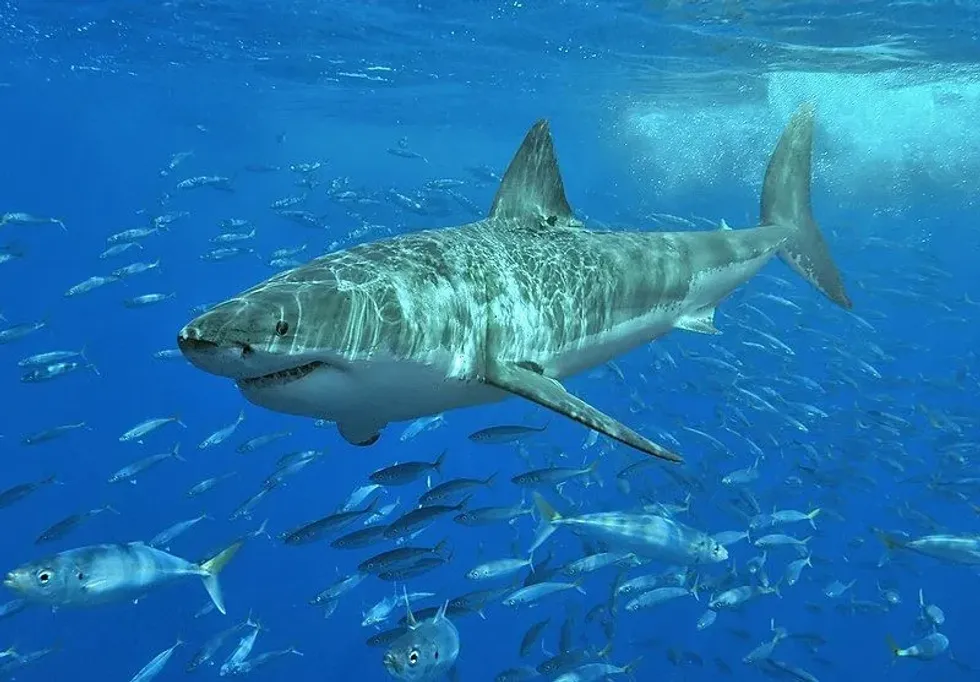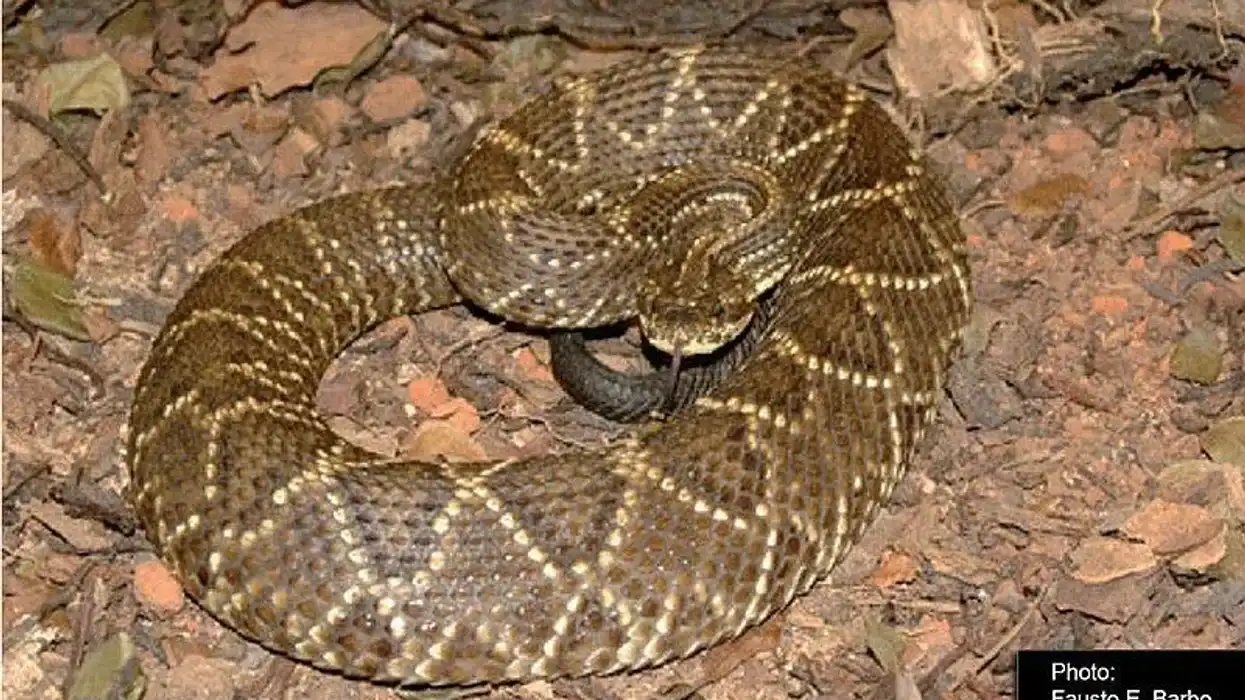This small shark species, the daggernose shark (Isogomphodon oxyrhynchus) named after a dagger, also goes by the names pato and quati in Brazil and demoiselle and bécune in French Guyane. During the drier months of June to November, they tend to move inshore whereas they can be found in offshore waters in the wetter months of December to May.
This shark species from South America is a victim of fishing mortality. Although the meat of these endangered sharks is of low quality, subsistence fishers across Trinidad, French Guiana, Suriname, and Guyana continue extracting these sharks as bycatch.
This means they catch these sharks when they are fishing for the highly demanded and profitable king weakfish and Spanish mackerel for local Brazilian markets.
In the north, this endangered species can only be found in Trinidad and Tobago, while they can be occasionally traced in the Tubarão bay in the south. These sharks were once a common sight across the coastal belts of northern Brazil and South America but currently, they have become a Critically Endangered species.
For more relatable content, check out these stingray facts and ray facts for kids.
Daggernose Shark Interesting Facts
What type of animal is a daggernose shark?
The daggernose shark (Isogomphodon oxyrhynchus) is a Critically Endangered species of cartilaginous fish belonging to the Carcharhinidae family.
What class of animal does a daggernose shark belong to?
Daggernose sharks belong to class Chondrichthyes. They are the sole extant member of the genus Isogomphodon.
How many daggernose sharks are there in the world?
The population of this species is believed to be extremely low with an estimation of about 250 mature individuals in 2016. Population decline has been recorded at an average annual rate of 18.4% which implies that without adequate conservation measures, this species could potentially become extinct within the next few years.
Bycatch numbers have also declined by 90% since the '90s.
Where does a daggernose shark live?
Daggernose sharks can be traced to the coastal inland waters of South America, northern Brazil, Venezuela, French Guiana, Suriname, Guyana, and Trinidad and Tobago. They were once plentiful in the central and southwest Atlantic Ocean and the Caribbean Sea.
The once abundant species has become extremely rare within its geographical range. According to records, it can no longer be found in Brazil.
What is a daggernose shark's habitat?
The species can be found in shallow tropical water bodies and fails to survive in freshwater. Its habitat encompasses coastal regions like river mouths, marshy mangroves, and estuaries. They enjoy hunting in murky, turbid waters. They can also be found in fisheries.
Who do daggernose sharks live with?
Sharks are known to be solitary dwellers as they enjoy hunting and swimming in oceanic waters unescorted. They can be found in schools some times.
How long does a daggernose shark live?
Male daggernose sharks can survive for a maximum of 12 years. Females have a longer lifespan of about 20 years. The generation length has been evaluated at nine years.
How do they reproduce?
Daggernose sharks are placental viviparous, meaning embryonic development occurs inside their body. Copulation continues for six months throughout the rainy season. However, the reproductive cycle changes depending on the environmental conditions.
The gestation period of females continues for an entire year after which the females give birth to three to eight pups. Normally, the females take shelter in coastal nurseries to give birth. Maranhão, a Brazilian state, contains a nursery off the coast.
What is their conservation status?
The records presented by the International Union for Conservation of Nature (IUCN) Red List reveal that the daggernose shark (Isogomphodon oxyrhynchus) is presently Critically Endangered.
Daggernose Shark Fun Facts
What do daggernose sharks look like?
The species comes with a pointed snout, small eyes and teeth, and large pectoral fins. The primary body color of these sharks ranges from gray to gray-brown with a white underside. Males are slightly smaller than their female counterparts.

* Please note the image is of a bull shark, a member of the Carcharhinidae family. If you have an image of a daggernose shark, please let us know at hello@kidadl.com.
How cute are they?
Sharks are mostly associated with an aggressive and ferocious appearance due to their predatory instincts. Have you seen the sharp serrated teeth of sharks? They are quite frightening.
How do they communicate?
Sharks don't interact via sounds. They communicate through gestures and body language which includes jaw movements, nodding, arching, and slapping displays. These endangered sharks are dependent on their sensory organs located in their snout while hunting in shallow, turbid waters.
How big is a daggernose shark?
This small-sized species can grow up to a maximum length of 63 in (160 cm). Isogomphodon oxyrhynchus adult females attain maturity at about 45 in (115 cm) while adult males measure 40.6 in (103 cm) in length. With an average length of around 79-98.4 in (200-250 cm), the Caribbean reef shark is comparatively larger.
How fast can a daggernose shark swim?
Generally, sharks can swim at an average speed of 25 mph (40kph) but they are capable of reaching a maximum speed limit of 31 mph (50 kph).
How much does a daggernose shark weigh?
The average weight of an Isogomphodon oxyrhynchus shark is around 29 lb (13 kg). Females weigh a bit more than their male counterparts due to their larger size.
What are the male and female names of the species?
Male and female daggernose sharks are called male daggernose sharks and female daggernose sharks.
What would you call a baby daggernose shark?
Baby daggernose sharks are called pups.
What do they eat?
The species indulges in a carnivorous diet comprising a range of small schooling fishes like herrings, croakers, clupeids, anchovies, and sciaenids.
Are they dangerous?
Despite belonging to the family of sharks, this species is not considered too harmful owing to its small-sized body and comparatively smaller mouth and teeth. However, it cannot be assured that it is absolutely docile as these sharks are carnivorous feeders.
Would they make a good pet?
Commonly, sharks are not really thought of as marine aquarium pets and cannot be found in pet stores. Moreover, marine species that are on the brink of extinction must not be removed from their natural habitat. However, a few species of sharks are kept in large saltwater aquariums as pets.
Did you know...
The term 'oxyrhynchus' has been derived from the Greek words 'oxys' and 'rhynchos' meaning 'pointed' or 'sharp' and 'nose' respectively.
Why is the daggernose shark endangered?
Unrestrained human activities like fishing and harvesting combined with factors like pollution and climate change have damaged marine biodiversity and more specifically, the population distribution of these sharks. According to the International Union for Conservation of Nature (IUCN) Red List, apart from daggernose sharks, basking sharks and whale sharks also have a status as endangered species.
The population distribution of this species is affected due to uncontrolled artisanal fishing. In Brazil, these endangered sharks are often caught as bycatch and fished out in gillnets to catch profitable fishes like the king weakfish and Spanish mackerel.
Fisheries in Trinidad, French Guiana, Suriname, and Guyana greatly exploit the population of danggernose sharks. It is speculated that a reproductive collapse might be one of the contributing factors leading to a population decline of daggernose shark.
Conservation efforts have been recommended by IUCN. Without precautionary measures being implemented, this species might soon be facing extinction.
Why is it called the daggernose shark?
The word 'dagger' in the name is misleading. Named for their long jaw and dagger-like pointed snout, these sharks are exactly the opposite and are harmless. In fact, they are pretty vulnerable and humans are causing more harm to them.
Here at Kidadl, we have carefully created lots of interesting family-friendly animal facts for everyone to discover! Learn more about some other fish from our amberjack facts and guppy facts pages.
You can even occupy yourself at home by coloring in one of our free printable daggernose shark coloring pages.









